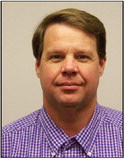WM Utility Dept. weighing shift away from coal

WM Utility Dept. weighing shift away from coal
Natural gas could prove to be the future of power generation for city
news@theeveningtimes.com
The number of natural gas fired electric generation plants planned or already producing has increased as an option to coal fired power plants. Increased environmental restrictions on carbon emissions from coal, along with an increase in natural gas supplies have many utility companies exploring the potential for new generation projects. West Memphis is no exception.
Newly discovered natural gas reserves paired with technology to tap deep shale and limestone deposits and deliver the fuel produced long range forecasts for lower prices. A shift occurred in electric generation. The percentage of electricity supplied by natural gas plants increased every year for the last 30 years while coal plant production decreased in market share. According to American Electric Power, natural gas power plants have out-produced coal since 2016.
The trend put West Memphis Utilities into the hunt.
The utilities commission approved joining two other municipal utility companies to explore the feasibility of the same project. The move came during the May meeting at the utilities after a brief overview from Utilities General manager Todd Pedersen who cast a vision and emphasized the importance for developing an alternative to coal power.
“This project was something like our coal plants we bought into in the 1980’s and they are still furnishing us,” said Pedersen. “Likewise, this could be serving the citizens of West Memphis for 20 to 30 years.”
West Memphis would hold a minor share in a familiar three way partnership with City Light and Water in Jonesboro and the municipal utility in Conway. The three bought shares of the White Bluff and Independent coal plants about forty years ago. Pedersen saw potential in a gas-fired plant which could serve the city for generations, just like the coal plants have provided long term service.
Pedersen pegged the West Memphis share of initial engineering expense to seed the project at $40,000 on the high end. The GM based that figure on experience found in other development projects.
“We will be sharing these costs,” said Pedersen. “Our share in is 20 percent of the expenses with Jonesboro and Conway sharing 40 percent each. If we ever decide it’s not what we want, we can drop out and our expense ends.”
The utility was approached by a company planning to develop a generator in Arkansas but Pedersen held the details in confidence.
The initial funds serve to hire national engineering and law consultants. The three utilities had all worked with the lawyers and designers before. The familiar fit felt comfortable.
“All three parties have used these firms before, legally and engineers both,” said Pedersen. “They are very reputable, highend companies. It will save us expense and provide a unified front to negotiate.”
Where the new plant would be located remained a secret.
“I’m being vague because of confidentiality and nondisclosure that we signed,” said Pedersen.
“They don’t want exactly what and where they are doing this out there.”
Pedersen pitched the potential project built around a new four burner power house. A bigger plant produces economic efficiency.
“This would enable us to buy into a larger scale gas to electric facility. Each unit is 800 megawatts, so we are talking 320 megawatss,” said Pedersen. “The economies of scale give you some benefit because typically you get a more efficient unit. The bigger guys can jump out there and build these, but we can’t. We are smaller and need partners. We are looking at a 10 Megawatt slice.”
Environmental regulations and law suits against coal burners continue making coal based generators more expensive. Pedersen said the life expectancy of the plants West Memphis owns shares of was about done.
“The main reason we are looking at this is because of how old those coal plants are,” said Pedersen. “The transition will be from that power supplying our needs to potentially other resources providing our power needs. This is a potential replacement for coal plants.”
Pedersen expected a quick planning phase.
“I’m hearing they’d like final (regulatory) approvals by first quarter next year,” said Pedersen. “This is going to be fast track. The developer is pricing the structure. They’ve done due diligence to locate the facility. When they get their final proposal numbers together, we will start our number crunching.”


By John Rech


Share